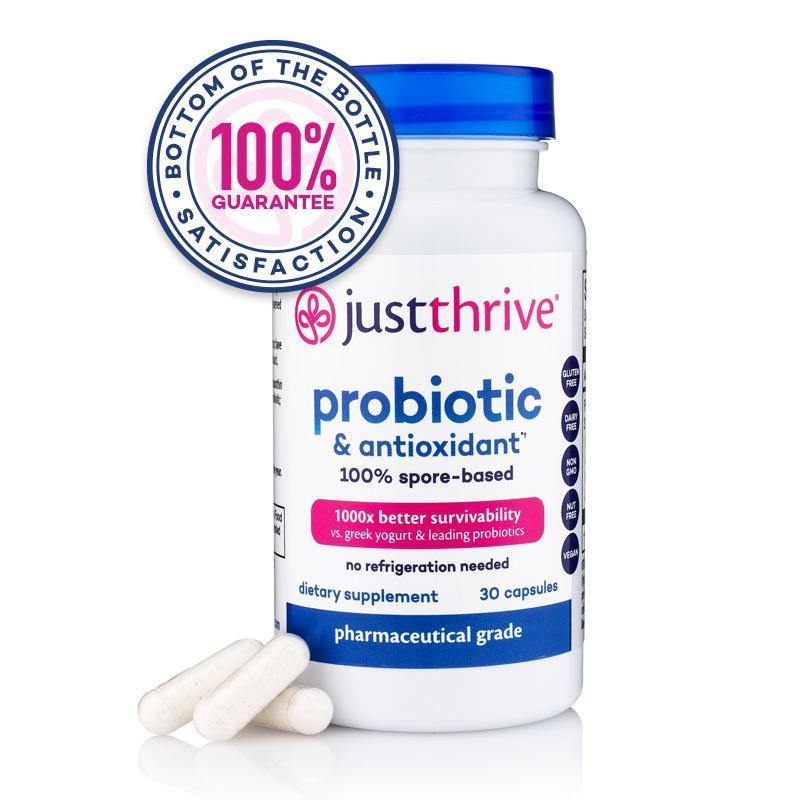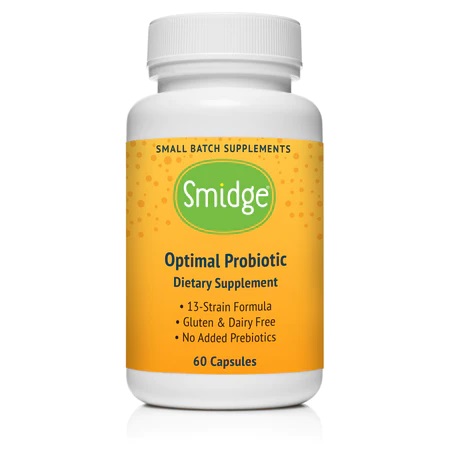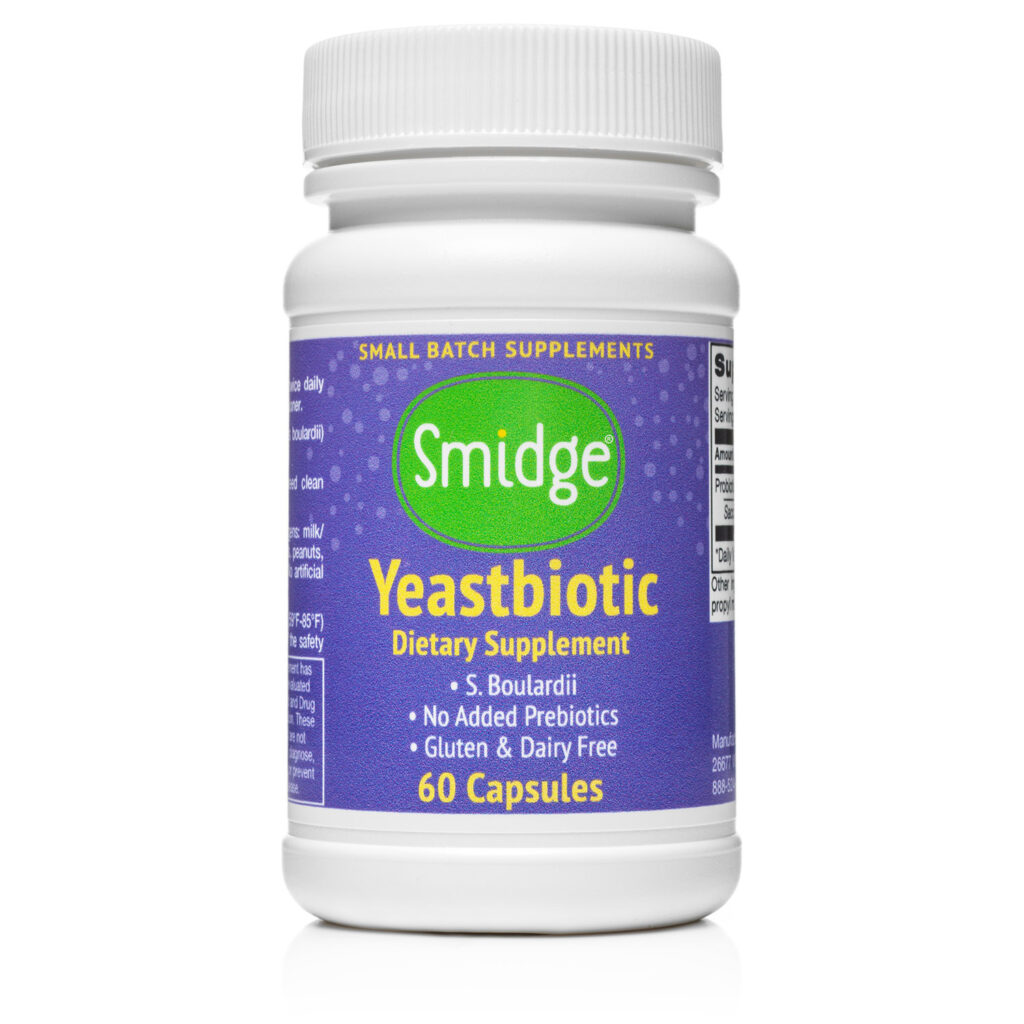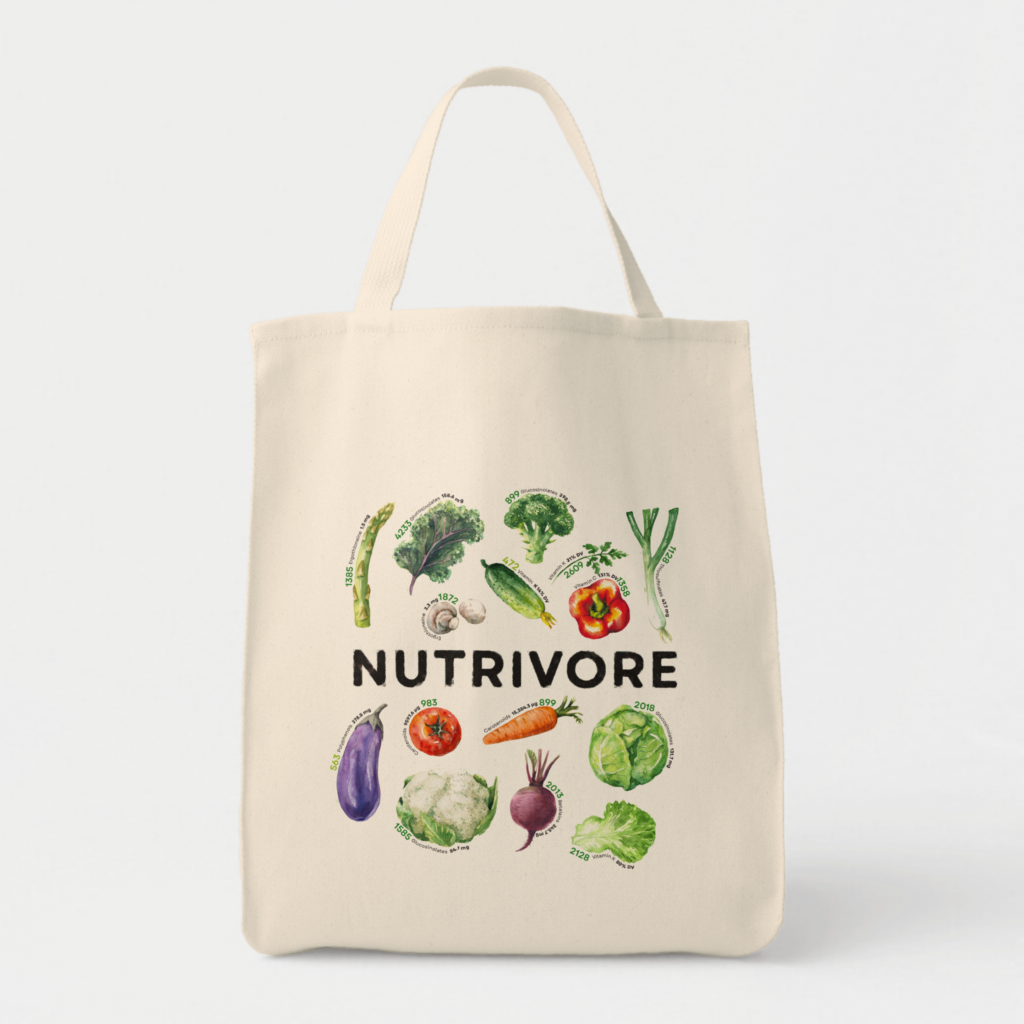Key Takeaways (expand)
- Tryptophan is one of the nine essential acids that we must obtain from our diet, and one of 20 amino acids used to synthesize protein.
- Tryptophan is used for the production of two important neurotransmitters, serotonin and melatonin.
- Through its conversion to serotonin, tryptophan can influence memory, learning, sleep, body temperature, mood, behavior, digestion, and hunger!
- Through its conversion to melatonin, tryptophan influences the immune system, affects the body’s sleep-wake cycle, and impacts other hormones.
- In the liver, tryptophan can also be used to synthesize niacin (vitamin B3)—a nutrient needed for DNA production and energy metabolism.
- When tryptophan occurs in proteins, it plays important structural and functional roles.
- Research shows tryptophan can support a number of aspects of mood and cognition—including depression, learning, memory, visual cognition, anger, and aggression control.
- Although the evidence is mixed, some studies suggest tryptophan could be helpful for seasonal affective disorder, PMS, and anxiety related to smoking cessation; more research is needed!
- Tryptophan may improve some aspects of sleep duration and quality, possibly reducing the risk of type 2 diabetes and obesity as a result.
- There’s also evidence that tryptophan could be protective for inflammatory bowel disease (IBD).
- Good sources of tryptophan include poultry, egg whites, dairy, seeds, soybeans, peanuts, oats, bananas, and fish.
Table of Contents[Hide][Show]
Tryptophan (symbol Trp) is one of the nine essential amino acids that we must obtain from food. Despite having the lowest concentration in the body of any amino acid, it plays some incredibly important metabolic roles that affect cognition, mood, and behavior! It was first discovered in 1901 by the English biochemist Frederick Hopkins, who isolated it from the milk protein casein.
Along with being used for the biosynthesis of protein, tryptophan is needed for normal growth, muscle synthesis and maintenance, and neurotransmitter production (melatonin and serotonin)—with the latter giving it roles in mood, sleep, cognition, and gut health.
Rich sources of tryptophan include poultry, egg whites, dairy, seeds (especially sunflower, pumpkin, and sesame), soybeans, peanuts, oats, bananas, and fish.
Ditch Diets. Embrace Nutrients. Start with this FREE Guide.
Sign up for the free Nutrivore Newsletter, your weekly, science-backed guide to improving health through nutrient-rich foods — without dieting harder —and get the Beginner’s Guide to Nutrivore delivered straight to your inbox!

The Biological Roles of Tryptophan
Broadly, amino acids are molecules with the molecular formula of R-CH(NH2)-COOH-NH2, where -NH2 is the basic amino group, COOH is an acidic carboxyl group, and R represents a molecular unit called a side chain. That side chain is unique for each amino acid, and its chemical properties create different classes of amino acids: nonpolar and neutral, polar and neutral, polar and acidic, and polar and basic.
Although hundreds of amino acids exist, only 20 of them are used for what amino acids are arguably most known for: forming the building blocks of proteins. Proteins are not only an essential macronutrient in the human diet; they’re molecules that perform most of the various functions of life. In addition to being major structural components of cells and tissues, proteins have incredibly diverse roles that range from driving chemical reactions (e.g., enzymes) to signaling (e.g., some types of hormones) to transporting and storing nutrients. Proteins are synthesized within cells through a two-phase process of transcription and translation, during which amino acids get linked together to form long chains (spanning anywhere from 20 to over 2,000 amino acids in length!).
So, while all proteins are made of amino acids, not all amino acids are used for making proteins! We use the term proteinogenic amino acids to refer specifically to the amino acids that get encoded into our DNA and incorporated into proteins. Meanwhile, non-proteinogenic amino acids do neither of these things (although they still have some very important biological roles!).
Amino acids can be further classified based on whether we can create them in our bodies, or need them from our diet. Essential amino acids are amino acids that can only be obtained from foods; these include histidine, isoleucine, leucine, lysine, methionine, phenylalanine, threonine, tryptophan, and valine. Non-essential amino acids are amino acids our bodies can synthesize metabolically from other molecules; these include alanine, arginine, asparagine, aspartic acid, cysteine, glutamic acid, glutamine, glycine, proline, serine, and tyrosine. And, some amino acids are conditionally essential, meaning our bodies can normally make them, but some circumstances (like illness or stress) can limit their synthesis and create a dietary requirement. These include arginine, cysteine, glutamine, tyrosine, glycine, ornithine, proline, and serine.
As an essential and proteinogenic amino acid, tryptophan must be obtained from dietary sources, and can be used to create proteins! It’s also the largest of the 20 proteinogenic amino acids, with the most energy-consuming and complex biochemical pathway of them all.
Notably, tryptophan is used for the production of two important neurotransmitters: serotonin and melatonin. After being consumed, tryptophan can be transported to the brain and converted into serotonin, via the serotonergic pathway. First, it’s converted to a molecule called 5-hydroxytryptophan by the tryptophan hydroxylase enzyme (which serves as the rate-limiting step of serotonin synthesis). After that, the newly formed 5-hydroxytryptophan is converted to serotonin (also called 5-hydroxytryptamine, or 5-HT) by the aromatic amino acid decarboxylase enzyme. Serotonin then plays a number of crucial roles in the body, including influencing memory, learning, sleep, body temperature, mood, behavior, digestion, and hunger!
The serotonin pathway also allows tryptophan to eventually become melatonin; in fact, melatonin is the end-product of this pathway. After tryptophan’s conversion to serotonin, the serotonin can then become acetylated and then methylated within the pineal gland, ultimately yielding melatonin (a process that’s triggered by darkness, and stopped by exposure to light). From there, melatonin helps manage the body’s day and night (AKA wake-sleep) cycles, affects other hormones, influences the immune system, and serves as a powerful antioxidant. The process of dietary tryptophan becoming melatonin can take over a full day to complete!
In the liver, tryptophan can also be used to synthesize niacin (vitamin B3)—a nutrient needed for DNA production and energy metabolism. This conversion is dependent on having enough available iron, riboflavin, and vitamin B6, as well as other physiological conditions involving hormones (especially estrogen), chemicals, and the absence of disease. When these factors are in place, the kynurenine pathway brings tryptophan through a process of catabolism to produce quinolinic acid, which then gets converted into nicotinic acid mononucleotide, used to generate the nicotinamide coenzyme NAD+ (itself an essential coenzyme for redox reactions). From there, NAD can be hydrolyzed into nicotinamide, a water-soluble form of niacin. Only about 2% of dietary tryptophan becomes niacin through this complex pathway!
When tryptophan occurs in proteins, it plays important structural and functional roles—including anchoring membrane proteins within cell membranes.
Everything You Need to Jump into Nutrivore TODAY!

Nutrivore Quickstart Guide
The Nutrivore Quickstart Guide e-book explains why and how to eat a Nutrivore diet, introduces the Nutrivore Score, gives a comprehensive tour of the full range of essential and important nutrients!
Plus, you’ll find the Top 100 Nutrivore Score Foods, analysis of food groups, practical tips to increase the nutrient density of your diet, and look-up tables for the Nutrivore Score of over 700 foods.
Buy now for instant digital access.
Tryptophan in Health and Disease
Tryptophan has been the subject of research for a number of health conditions involving serotonin and melatonin. So far, studies suggest it could play a beneficial role in mood, cognition, sleep disorders, gut health, and migraine risk! Some research has explored whether tryptophan can help treat specific conditions such as seasonal affective disorder (SAD), premenstrual pain and dysphoria, and anxiety related to smoking cessation, though the science here is less clear.
Tryptophan, Mood, and Cognition
Due to its influence on serotonin levels, tryptophan supports a number of aspects of mood and cognition. Experiments using tryptophan elimination have shown this amino acid can impact depression, learning, visual cognition, memory, and aggression control. Low plasma concentrations of tryptophan have been linked to higher risk of major depressive disorder, as well as bipolar disorder. And, a large systematic review found that supplementing with 0.14 g to 3 g of tryptophan per day (in addition to typical dietary sources) has a positive effect on mood (including a decrease in anxiety and increase in happy feelings) among healthy individuals. Other experiments show that tryptophan depletion negatively affects various aspects of cognition including episodic memory, word recall, visual discrimination, memory retrieval, and cognitive flexibility among various populations. And likely through its conversion to serotonin, tryptophan has been shown to affect behavior—including aggression, anger, and hostility.
Tryptophan and Sleep Disorders
As a precursor to serotonin, tryptophan has attracted specific interest for sleep disorders (since serotonin plays a role in the modulation of sleep, though it’s exact role is still debated). In fact, the drowsiness people report after eating an American Thanksgiving dinner has long been rumored to be caused by the high tryptophan content of turkey—although this is more likely due to the large size and high carbohydrate content of a typical Thanksgiving meal, since turkey isn’t significantly higher in tryptophan than most other meats.
A review and meta-analysis of 18 publications found that tryptophan supplementation, especially in doses of at least 1 g daily, is effective for improving sleep quality—namely, shortening wakefulness after sleep onset (AKA the total number of minutes a person is awake again after having initially fallen asleep). However, this same analysis didn’t find tryptophan to be helpful for any other sleep components, such as sleep latency (how long it takes someone to fall asleep) and sleep efficiency (the ratio of total time asleep to total time spent in bed), total sleep time, rapid eye movement (REM) duration, and non-rapid eye movement (NREM) duration.
Tryptophan, Type 2 Diabetes, and Obesity
Interestingly, a 2022 analysis of over 7,900 adults found that dietary tryptophan was associated with a significant decrease in risk of type 2 diabetes and obesity (31% and 40% reduced risk, respectively, for people in the highest tertile of intake versus the lowest), and that this protective effect seemed to be mediated by tryptophan’s effects on sleep duration. More research is needed to understand and confirm these links!
Tryptophan and Seasonal Affective Disorder
For a form of depression called seasonal affective disorder (SAD), there’s some evidence that tryptophan could have synergistic effect with light therapy, may benefit patients who are resistant to light therapy treatment, and could help prolong the antidepressant effects of light therapy. But, some of these outcomes appear dependent on genetic factors and may not be universal for all SAD patients.
Tryptophan and Premenstrual Syndrome
Some trials have found that tryptophan supplementation during specific points of the menstrual cycle (particularly the late luteal phase) could improve premenstrual irritability, mood swings, tension, and dysphoria; likewise, tryptophan depletion has been shown to aggravate premenstrual syndrome (especially irritability). More research with larger study populations is needed to confirm these findings.
Tryptophan and Smoking Withdrawal
When it comes to quitting smoking, a small number of trials have found that tryptophan supplementation (at 50 mg per kg of bodyweight daily) may be helpful in relieving negative affect (a common side effect of cigarette withdrawal), especially when paired with a high-carbohydrate diet. But here, too, the research is too sparse to be conclusive.
Tryptophan and Migraine
A small 2019 case-control study found a significant protective effect of dietary tryptophan intake on migraine risk—a 54 – 60% reduction in risk for those in the two highest quartiles of tryptophan intake versus the lowest (0.56 g or less daily). More research is needed to explore this finding!
Tryptophan and Gut Health
Tryptophan has also been implicated in gut health, particularly protection against inflammatory bowel disease (IBD). Evidence suggests that the breakdown of tryptophan by gut bacteria can help regulate the gut barrier function, reducing intestinal permeability associated with IBD. Likewise, tryptophan and its metabolites appear to help regulate intestinal inflammation, and mediate the differentiation of some immune cells (such as regulatory T cells) involved in IBD pathology.
The THREE Best Probiotics
Bacillus/Spore-based

Best for a general probiotic, if you were recently on antibiotics, or for digestion issues (especially abdominal pain, bloating, flatulence, diarrhea, and gas after meals).
Lactobacillus & Bifidobacterium

Best for if you don’t eat fermented foods, if you were recently on antibiotics, or if you have issues with constipation or gas.
Saccharomyces boulardii

Best for if you have Candida issues, were recently on antibiotics, or have diarrhea.
Health Effects of Tryptophan Deficiency
Tryptophan deficiency, along with niacin deficiency, can result in a condition called pellagra—characterized by sores in the mouth, nausea, vomiting, diarrhea, a sunburn-like rash, blisters, skin discoloration, and the sloughing off of skin. Eventually, it can progress to insomnia, depression, hallucinations, and dementia.
Some health conditions can increase the risk of tryptophan deficiency, even when dietary intake is sufficient. For example, fructose malabsorption—in which fructose is poorly absorbed, instead reaching the colon and getting broken down by gut bacteria there—is associated with lower blood levels of tryptophan. High concentrations of fructose in the intestine appear to interfere with tryptophan metabolism, in turn reducing its availability as a neurotransmitter precursor (which may be why fructose malabsorption is associated with depression and other mood disorders!).
Didn’t know tryptophan was this important? Maybe your friends will enjoy this too!
Problems From Too Much Tryptophan
In some cases, tryptophan supplementation can cause side effects such as nausea, diarrhea, headache, drowsiness, blurred vision, lightheadedness, dry mouth, sedation, euphoria, and involuntary eye movements. And, tryptophan supplementation can potentially interact with serotonergic drugs such as monoamine oxidase inhibitors (MAOIs) and selective serotonin uptake inhibitors (SSRIs). When tryptophan is taken at the same as these classes of drugs, it can cause a very serious adverse effect called serotonin syndrome, where excess serotonin builds up and causes neuromuscular excitation, nervous system dysfunction, and an altered mental status. This amino acid can also potentiate the effects of sedative medications (central nervous system depressants).
There have also been reports of tryptophan supplements causing a rare, sometimes fatal neurological condition called eosinophilia-myalgia syndrome (EMS), characterized by severe muscle pain and elevated levels of eosinophils (a type of white blood cell). In 1989, an outbreak of EMS was linked to L-tryptophan supplements, and resulted in tryptophan being banned from over-the-counter sales for over a decade. But, it’s still uncertain whether this outbreak was from the tryptophan itself, or from contaminants in a particular batch from one manufacturer. In any case, the likelihood of tryptophan causing this condition increases with larger dose sizes, advanced age, and potentially certain genetic polymorphisms.
How Much Tryptophan Do We Need?
The recommended intake for tryptophan is 4 mg per kg (1.8 mg per lb) of body weight daily for most adults.

Merch and Household Goods
Check out our collection of practical and nerdtastic T-shirts, totes, and more!
Citations
Expand to see all scientific references for this article.
Barik S. The Uniqueness of Tryptophan in Biology: Properties, Metabolism, Interactions and Localization in Proteins. Int J Mol Sci. 2020 Nov 20;21(22):8776. doi: 10.3390/ijms21228776.
Bondy SC, Campbell A. Melatonin and Regulation of Immune Function: Impact on Numerous Diseases. Curr Aging Sci. 2020;13(2):92-101. doi: 10.2174/1874609813666200711153223.
Bowen DJ, Spring B, Fox E. Tryptophan and high-carbohydrate diets as adjuncts to smoking cessation therapy. J Behav Med. 1991 Apr;14(2):97-110. doi: 10.1007/BF00846173.
Ding X, Bin P, Wu W, Chang Y, Zhu G. Tryptophan Metabolism, Regulatory T Cells, and Inflammatory Bowel Disease: A Mini Review. Mediators Inflamm. 2020 Jun 12;2020:9706140. doi: 10.1155/2020/9706140.
Fiore A, Murray PJ. Tryptophan and indole metabolism in immune regulation. Curr Opin Immunol. 2021 Jun;70:7-14. doi: 10.1016/j.coi.2020.12.001.
Fukuwatari T, Shibata K. Nutritional aspect of tryptophan metabolism. Int J Tryptophan Res. 2013 Jul 21;6(Suppl 1):3-8. doi: 10.4137/IJTR.S11588.
Hebbrecht K, Skorobogatov K, Giltay EJ, Coppens V, De Picker L, Morrens M. Tryptophan Catabolites in Bipolar Disorder: A Meta-Analysis. Front Immunol. 2021 May 19;12:667179. doi: 10.3389/fimmu.2021.667179.
Kikuchi AM, Tanabe A, Iwahori Y. A systematic review of the effect of L-tryptophan supplementation on mood and emotional functioning. J Diet Suppl. 2021;18(3):316-333. doi: 10.1080/19390211.2020.1746725.
Kulikov AV, Popova NK. Tryptophan hydroxylase 2 in seasonal affective disorder: underestimated perspectives? Rev Neurosci. 2015;26(6):679-90. doi: 10.1515/revneuro-2015-0013.
Lam RW, Levitan RD, Tam EM, Yatham LN, Lamoureux S, Zis AP. L-tryptophan augmentation of light therapy in patients with seasonal affective disorder. Can J Psychiatry. 1997 Apr;42(3):303-6. doi: 10.1177/070674379704200309.
Li X, Zhang ZH, Zabed HM, Yun J, Zhang G, Qi X. An Insight into the Roles of Dietary Tryptophan and Its Metabolites in Intestinal Inflammation and Inflammatory Bowel Disease. Mol Nutr Food Res. 2021 Mar;65(5):e2000461. doi: 10.1002/mnfr.202000461.
Lopez MJ, Mohiuddin SS. Biochemistry, Essential Amino Acids. [Updated 2022 Mar 18]. In: StatPearls [Internet]. Treasure Island (FL): StatPearls Publishing; 2022 Jan.
Maffei ME. 5-Hydroxytryptophan (5-HTP): Natural Occurrence, Analysis, Biosynthesis, Biotechnology, Physiology and Toxicology. Int J Mol Sci. 2020 Dec 26;22(1):181. doi: 10.3390/ijms22010181.
Menkes DB, Coates DC, Fawcett JP. Acute tryptophan depletion aggravates premenstrual syndrome. J Affect Disord. 1994 Sep;32(1):37-44. doi: 10.1016/0165-0327(94)90059-0.
Neumeister A, Praschak-Rieder N, Besselmann B, Rao ML, Glück J, Kasper S. Effects of tryptophan depletion on drug-free patients with seasonal affective disorder during a stable response to bright light therapy. Arch Gen Psychiatry. 1997 Feb;54(2):133-8. doi: 10.1001/archpsyc.1997.01830140043008.
Niacin: Fact Sheet For Health Professionals. National Institutes of Health (NIH) Office of Dietary Supplements. 23 Aug 2022.
Pu J, Liu Y, Zhang H, Tian L, Gui S, Yu Y, Chen X, Chen Y, Yang L, Ran Y, Zhong X, Xu S, Song X, Liu L, Zheng P, Wang H, Xie P. An integrated meta-analysis of peripheral blood metabolites and biological functions in major depressive disorder. Mol Psychiatry. 2021 Aug;26(8):4265-4276. doi: 10.1038/s41380-020-0645-4.
Razeghi Jahromi S, Togha M, Ghorbani Z, Hekmatdoost A, Khorsha F, Rafiee P, Shirani P, Nourmohammadi M, Ansari H. The association between dietary tryptophan intake and migraine. Neurol Sci. 2019 Nov;40(11):2349-2355. doi: 10.1007/s10072-019-03984-3.
Richard DM, Dawes MA, Mathias CW, Acheson A, Hill-Kapturczak N, Dougherty DM. L-Tryptophan: Basic Metabolic Functions, Behavioral Research and Therapeutic Indications. Int J Tryptophan Res. 2009 Mar 23;2:45-60. doi: 10.4137/ijtr.s2129.
Sambeth A, Blokland A, Harmer CJ, Kilkens TO, Nathan PJ, Porter RJ, Schmitt JA, Scholtissen B, Sobczak S, Young AH, Riedel WJ. Sex differences in the effect of acute tryptophan depletion on declarative episodic memory: a pooled analysis of nine studies. Neurosci Biobehav Rev. 2007;31(4):516-29. doi: 10.1016/j.neubiorev.2006.11.009.
Steinberg S, Annable L, Young SN, Liyanage N. A placebo-controlled clinical trial of L-tryptophan in premenstrual dysphoria. Biol Psychiatry. 1999 Feb 1;45(3):313-20. doi: 10.1016/s0006-3223(98)00005-5.
Sutanto CN, Loh WW, Kim JE. The impact of tryptophan supplementation on sleep quality: a systematic review, meta-analysis, and meta-regression. Nutr Rev. 2022 Jan 10;80(2):306-316. doi: 10.1093/nutrit/nuab027.
Wang W, Wang X, Liu L, Liu Z, Han T, Sun C, Yang X. Dietary tryptophan and the risk of obesity and type 2 diabetes: Total effect and mediation effect of sleep duration. Obesity (Silver Spring). 2022 Feb;30(2):515-523. doi: 10.1002/oby.23343.
Zagajewski J, Drozdowicz D, Brzozowska I, Hubalewska-Mazgaj M, Stelmaszynska T, Laidler PM, Brzozowski T. Conversion L-tryptophan to melatonin in the gastrointestinal tract: the new high performance liquid chromatography method enabling simultaneous determination of six metabolites of L-tryptophan by native fluorescence and UV-VIS detection. J Physiol Pharmacol. 2012 Dec;63(6):613-21.


